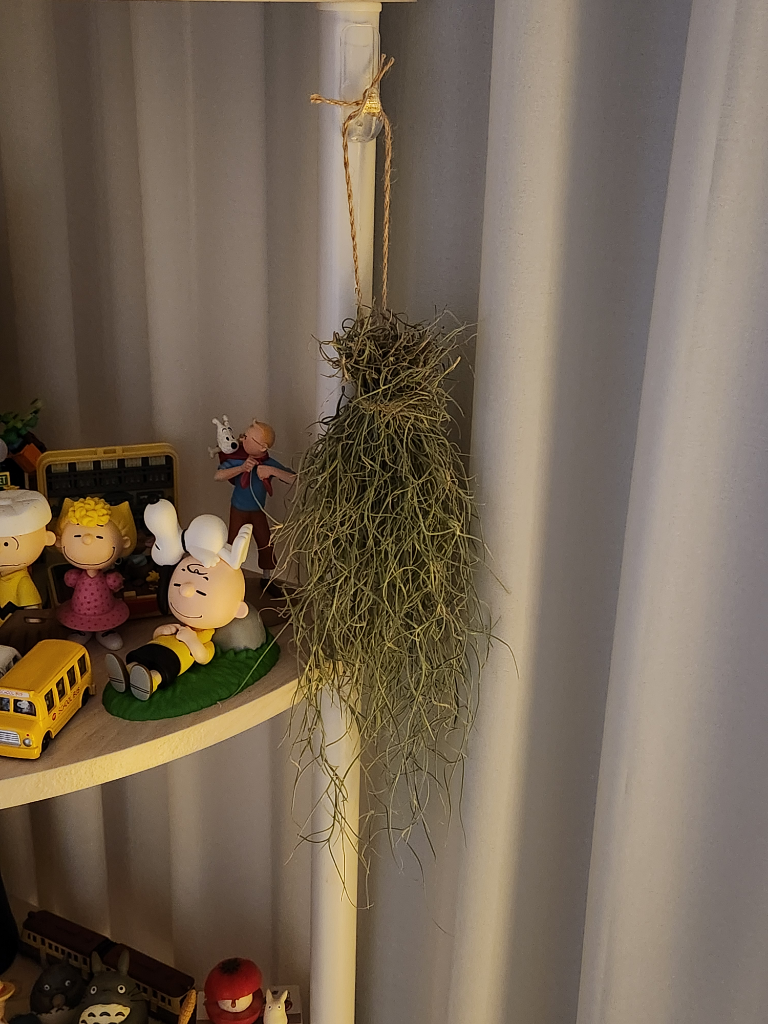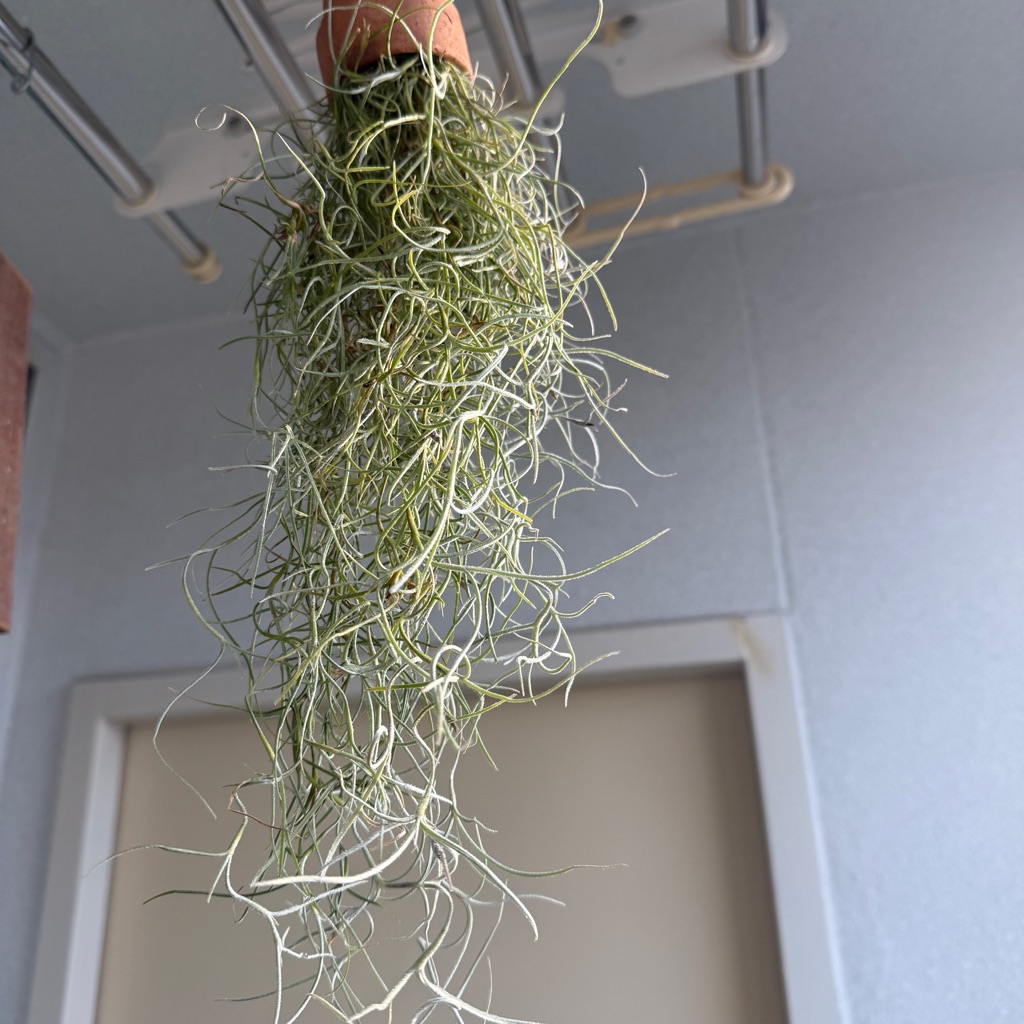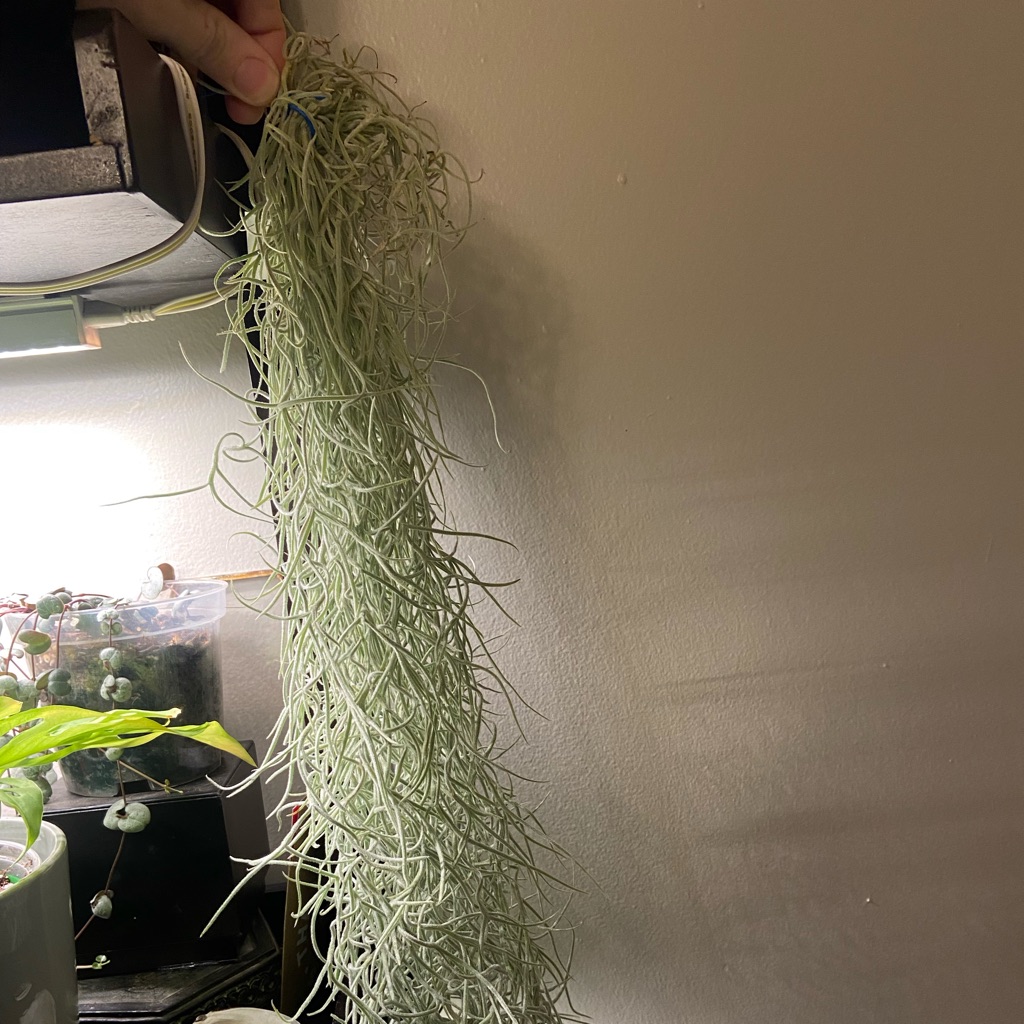How to grow and care for Tillandsia usneoides
plant care guide about watering, fertilizing, trimming, repotting, cutting, propagating Tillandsia usneoides
Tillandsia usneoides 101 - Plant Care Instructions
Bright direct light
21C° ~25C°
Every 7 days
Growth Observation wiki
Botany Encyclopedia
Genus : Tillandsia
🔖 Care Tips
This plant has a strong tendency to grow towards light, which can be used to shape it. It thrives without soil, reducing the likelihood of pests, and offers excellent decorative appeal. However, it grows slower than other plants, so it may not be suitable for those seeking rapid growth.
🏝️ Habitat Conditions
This plant is native to the Americas and grows attached to trees or rocks. Varieties with green leaves thrive under trees in rainforests or in shaded areas, preferring soft light and high humidity. Varieties with gray leaves grow on desert rocks, favoring strong light and dry conditions.
🪨 Soil Mix
This plant doesn't need soil. Do not plant it in soil even if roots appear. Instead, it absorbs water and nutrients through its leaves and stems. When the roots grow, attach it to wood or stones for decorative use.
🌡️ Environment
This plant thrives at temperatures between 20-28°C. Keep the temperature above at least 10°C. A humidity level of 50-60% is ideal. If the leaves are gray, lower the humidity; if they are green, increase it.
👀 Characteristics details
Plants with gray leaves have silvery hairs on the leaf surface, called trichomes. These plants are resistant to light and can store moisture and nutrients from the air. A plant with many trichomes is healthy. However, trichomes do not regrow once damaged, so it's best not to remove them.
☀️ Light
Plants with green leaves thrive with prolonged exposure to soft light, as they naturally grow under trees. Plants with gray leaves can survive in deserts but may get damaged by prolonged direct sunlight. Therefore, they should receive direct sunlight briefly and soft light for extended periods.
💧 Water
CAM plants open their stomata at night to evaporate water, so it's beneficial to mist them at night. Generally, water them by soaking once or twice a week, but the frequency may vary depending on humidity and environment. Ensure good air circulation after watering to prevent overwatering.
🌱 Propagate
After the flowers have wilted, new shoots typically emerge on the stem for propagation within a few weeks to months. To facilitate this, it's advisable to remove a few lower leaves after the flowers have fallen. Once the new shoot has grown to about 30% of the parent plant's size, it can be separated and cultivated independently. Propagation can also be done through seeds. Most species require artificial pollination with flowers from different plants, as self-pollination is not possible. Use a brush or cotton swab to gently transfer pollen between flowers of different plants. A few months after pollination, seed pods form and eventually burst, dispersing seeds. These seeds have fluffy structures like dandelion seeds, allowing them to be carried by the wind. When propagating by seeds, it may take 3 to 5 years for the plant to flower.
💊 Fertilize
Generally not necessary, but during spring to summer, spraying on the leaves or diluting in water and using within the recommended amount can promote more vigorous growth.
🌺 Flower
The plant blooms only once in its lifetime. Before blooming, the upper leaves turn red, and the flower stalk emerges as the flower blooms. After blooming, the plant can grow for a few months to several years but may eventually die.
😵 Toxicity
Non-toxic and safe for pets and children.
water
How to water Tillandsia usneoides
How often should I water?
check Tillandsia usneoides Every 7 days if it needs water when it’s very cold (below 5℃), water less frequently
When do I need to water?
the top 2-3 inches of soil is dry
Light & Location
How much light does a Tillandsia usneoides need?

Bright direct light
Bright indirect light
Grow light
Light preference
Tillandsia usneoides likes Bright direct light, Bright indirect light, Grow light day. The brighter the space, the better this plant grows.
Check if there’s an optimal place in your house!
This plant prefers
2K ~ 20K lux to thrive!
0
20K~
2K
20K
Temperature
Houseplants
-15
21~25℃
45
Plants that grow in the wild and those that grow indoors prefer different temperatures. If you grow Tillandsia usneoides at home, make sure the temperature is 21~25℃.
Humidity
Ideal humidity
0
40~70%
100
Tillandsia usneoides prefers humidity about 40~70%. If necessary, increase humidity by misting, humidifier.
Fertilize
Collective Knowhow
When should I fertilize?
Only when your plant is healthy
How frequently should I fertilize?
1-2 times in growing season. A pinch for a small pot.
Characteristic
The taxonomic classification of Tillandsia usneoides is as follows. - Kingdom: Plantae, Phylum: Tracheophyta, Class: Liliopsida, Order: Poales, Family: Bromeliaceae, Genus: Tillandsia, Species: Tillandsia usneoides
| Characteristic Name | Characteristic Value |
|---|---|
| Habitat | New Zealand |
| Taxonomy Name | Taxonomy Value |
|---|---|
| Phylum | Tracheophyta |
| Class | Liliopsida |
| Order | Poales |
| Family | Bromeliaceae |
| Genus | Tillandsia |
| Species | Tillandsia usneoides |
Is your plant sick?
Track what happened. We’ll let you know the cause and treatment shortly!





1:1 Expert Help
You’ll get professional feedback within 24 hours from an expert on our team.
feedback will include











